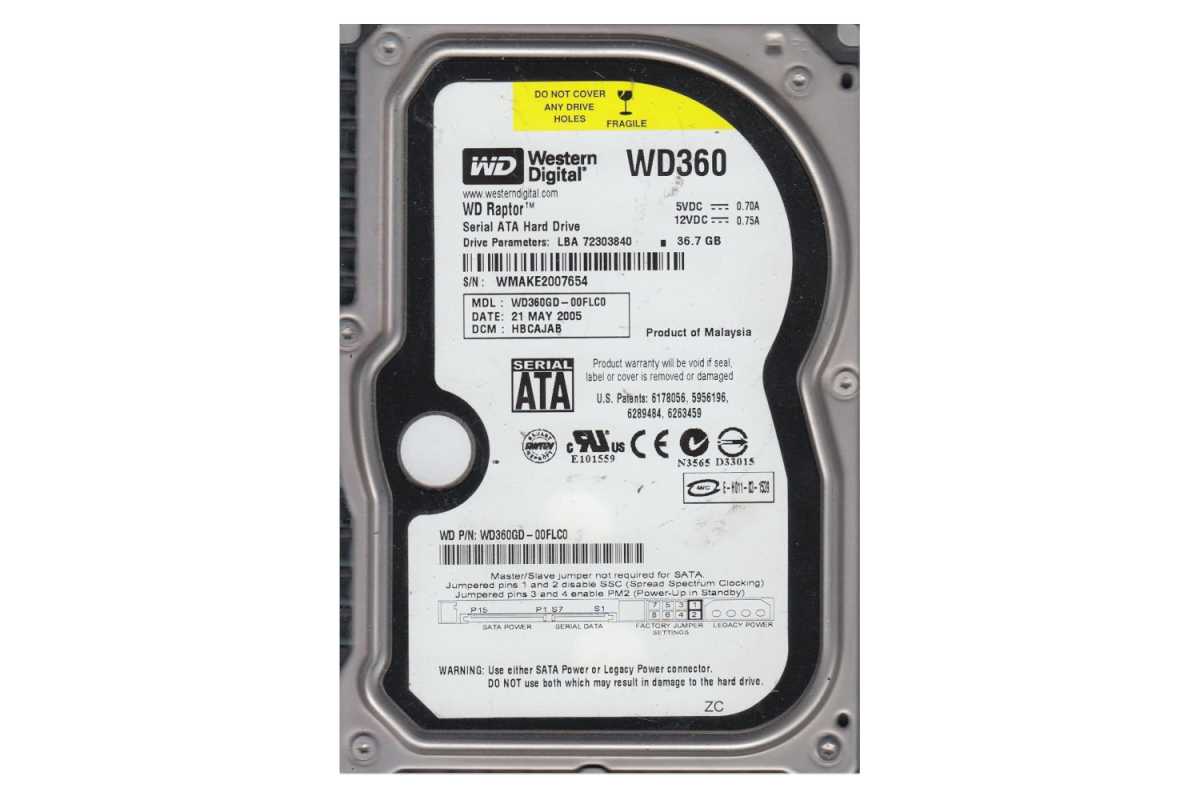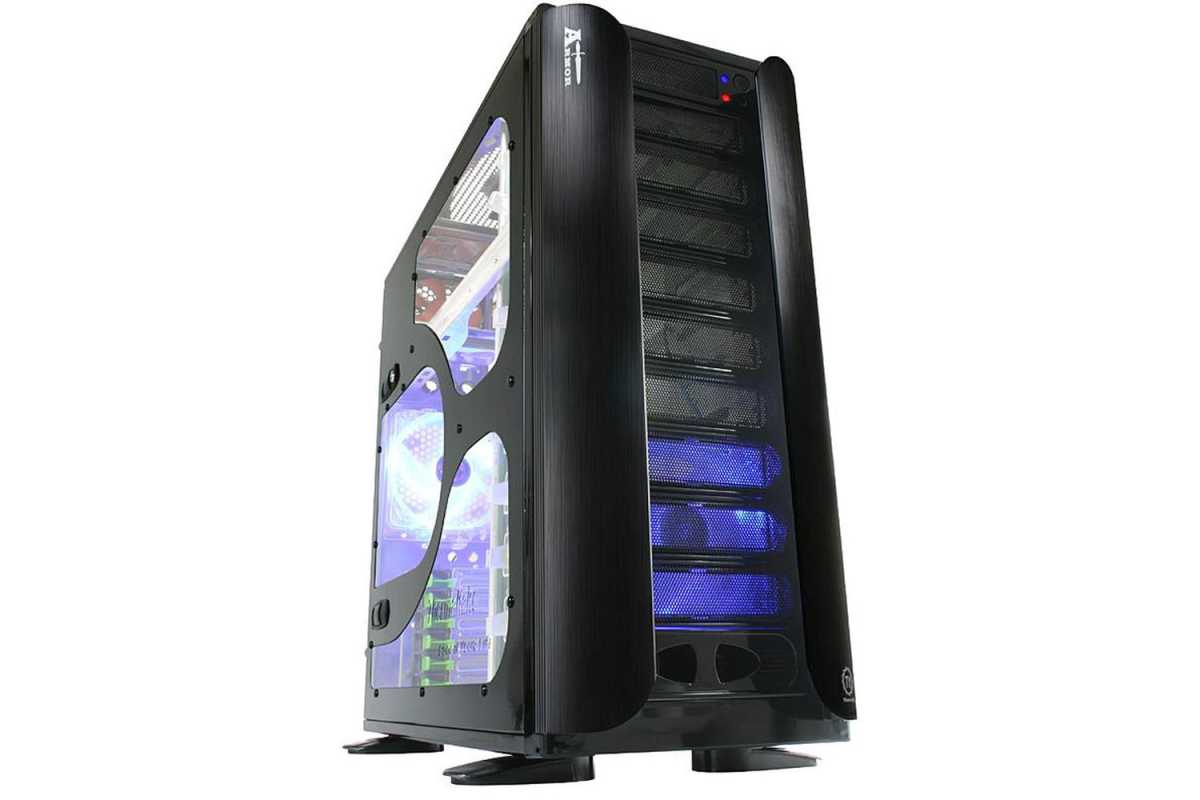This might be one of the dorkiest articles I’ve ever conceived. My editor even made fun of me for it! But it’s true and I’m not afraid or ashamed to say it — I actually do have a favorite hard drive from 20 years ago that taught me about tweaking and optimizing my PC.
I’m not talking about frames per second or CPU clock rates or sensor temperatures or wireless network speeds, which is what usually comes to mind first with modern PC optimizations. Nope. I’m talking about optimizing HDD boot times, back in the days before blazing-fast SSDs. The hard drive in question? A 36GB WD Raptor.
It’s 2005 and a young Jon is building a game-changer of a PC. It was a different time — AMD hadn’t even acquired ATI yet! — but I was forging ahead. My new PC paired an AMD Athlon 64 3200+ CPU with a Nvidia GeForce 6600 GT GPU and 1GB of OCZ eXtreme RAM (the one with the gold heatspreaders). I was desperate to add another graphics card to my overbuilt DFI Lanparty motherboard, or to swap out the CPU for one of the heavily overclockable Opterons that were doing the rounds. But I never did add another GPU for an SLI setup. Nor did I push the CPU beyond a couple of hundred extra MHz.
What I did spend a lot of time doing, though, was trimming my PC boot time as much as I could. With a streamlined BIOS, limited startup applications, overclocked CPU, and the Western Digital Raptor drive spinning at 10,000 RPM and delivering enterprise performance in my DIY gaming PC, I was getting Windows XP to boot in under 15 seconds.

Western Digital
Booting up in 15 seconds may seem glacial by today’s standards — and, to be fair, it wasn’t that fast back then either. I’d seen RAM drive demos with near-instantaneous starts, so cutting half a second off my 15-second bootup did very little to make my PC feel lightning-fast. But I had a lot of fun trying to get it down… and I could only do it with this drive.
The WD Raptor was a real standout for its time and looks just as bizarre in retrospect. It was the first consumer hard drive with 10,000 RPM, sold in 36GB and 74GB versions during a time when 80GB+ drives were affordable and commonplace. It had a single platter, which explained its smaller capacities, but that lone platter could spin at commercial-grade SCSI drive speeds — much higher than the 7,200 RPMs found in its consumer-grade contemporaries — and that meant faster sustained read/write speeds and random access times.
According to this still-online review by Anandtech, it managed a blistering 56MB/s of sequential data transfer and an access time of just over 8ms, about 50 percent faster than competing consumer hard drives. It was fantastic for booting up Windows and even better for launching games. In the era before SSDs, this drive unlocked a whole new level of storage performance that made your PC feel snappier and more responsive. Today, with all the multi-Gbps SSDs with crazy performance, it’s easy to forget that not that long ago most actions on a PC that required storage access took a second or two for the HDD to even spin up.
It wasn’t all fun and games with the WD Raptor, though. The drive was notoriously loud (even among old-school hard drives) and its “grinding” often vibrated my big Thermaltake Armor PC case with its useless flappy front door panels. Not to mention its 36GB capacity! With Windows XP, Unreal Tournament 2004, and Command and Conquer: Generals installed, I barely had room for MSN Messenger to chat with my girlfriend. I was intensely jealous of my peers on forums around the world who were able to buy the bigger 74GB version.

Thermaltake
With the 36GB model retailing for around $120, the cost-per-gigabyte was extreme. For that same money, you could get over 300GB for a drive that had more modest speeds. But a budding enthusiast like myself wasn’t interested in efficiency or cost effectiveness. The WD Raptor was for people who wanted to experience the future, right then and there.
And now we’re living in that future, one that has moved far beyond the unique capabilities and features of the WD Raptor line. Even budget SSDs now make an absolute mockery of what had made those drives so special, with sustained read/write speeds hundreds of times greater, with capacities that would’ve made young Jon’s eyes bulge and water.
But that drive had a real effect on me and others like me. The WD Raptor gave us a glimpse of the future, of PCs that were truly fast and responsive between apps and games, with decent capacity to boot — and that kindled in me a joy of tweaking and optimization that saw me through decades of career to here, writing about this silly, silly drive.
Hard drives aren’t quite dead yet, but we’ve mostly moved on by now. While it’s for the better, I do still kind of miss the grinding.




